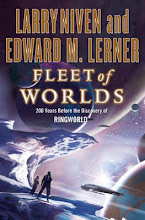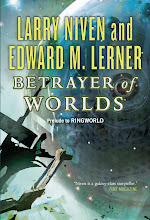I recently vacationed in England -- that's the Houses of Parliament to the left -- and my sightseeing tended toward the historical. Not exactly time travel, to be sure, but it sure carried my imagination far into the past. And I brought home some great (IMO) photos to help carry you there:
 Let's begin two or three thousand years BC. Here's the famous Druid temple, celestial calculator, observatory, and/or burial site, Stonehenge. Its purpose and the timing of its construction remain uncertain -- and are apt to remain unknown unless we somehow do develop time travel.
Let's begin two or three thousand years BC. Here's the famous Druid temple, celestial calculator, observatory, and/or burial site, Stonehenge. Its purpose and the timing of its construction remain uncertain -- and are apt to remain unknown unless we somehow do develop time travel.One of the many highlights of the trip was the British Museum, which is chock-full of fantastic archeological treasures. To mention just two:
The Elgin Marbles, of which the most famous were once parts of the decorative frieze of the Parthenon, sculptures created by the legendary Hellenic master Phidias (and/or his students). Call it 434 BC. (I'd seen the Parthenon, sans frieze, about fifteen years ago. Standing on the Acropolis was also amazing.)
(And no, I won't get into competing claims on this or other museum holdings.)
And from 196 BC, the Rosetta Stone, the trilingual stele with Pharaonic decree from which linguists first learned to translate Egyptian hieroglyphics. One of the three scripts was an early version of Greek (fair enough, as the pharaoh in question was a Ptolemy, descended from one of Alexander the Great's generals).
The ancient Greeks never made it to the British Isles, but the Romans certainly did. And they soon concluded that the north of the island of Britain wasn't worth the cost of holding it. Emperor Hadrian declared (in 122 AD) that a fortified barrier be built from coast to coast -- spanning 73 statute miles -- to separate Romano-Britain from the Celtic areas to the north. Parts of Hadrian's Wall (and although not in the nearby image, also bits of its old forts) still stand.
 Circa 410 AD, near the end of the (Western) Roman Empire, the Romans entirely withdrew from Britain.
Circa 410 AD, near the end of the (Western) Roman Empire, the Romans entirely withdrew from Britain.Fast-forward to 1066 AD and the Norman Conquest. To solidify his hold on the country, William the Conqueror began a series of his own fortifications, of which the most famous is the Tower of London. Here are the White Tower (from the original Norman construction) and an outside view of the larger Tower complex that grew around it.
 As Norman England morphed into Medieval England, construction changed, too. Here are a couple of interior shots of York Minster (completed 1472 AD): the largest Gothic cathedral north of the Alps. The image at right was shot up the great central tower of the cathedral.
As Norman England morphed into Medieval England, construction changed, too. Here are a couple of interior shots of York Minster (completed 1472 AD): the largest Gothic cathedral north of the Alps. The image at right was shot up the great central tower of the cathedral. What's old is sometimes new again. During the Georgian era the onetime Roman spa at Bath was rebuilt -- with a very Roman flair.
What's old is sometimes new again. During the Georgian era the onetime Roman spa at Bath was rebuilt -- with a very Roman flair. 
I'll end (long before I run out of imagery) with a chronological juxtaposition. In the background: St. Paul's Cathedral (competed 1711 AD), Christopher Wren's masterwork. In the foreground, the London Millennial Footbridge (that's the 2000 millennium :-) ) across the Thames.
Absent time travel, all vacations must end. Alas.







































No comments:
Post a Comment